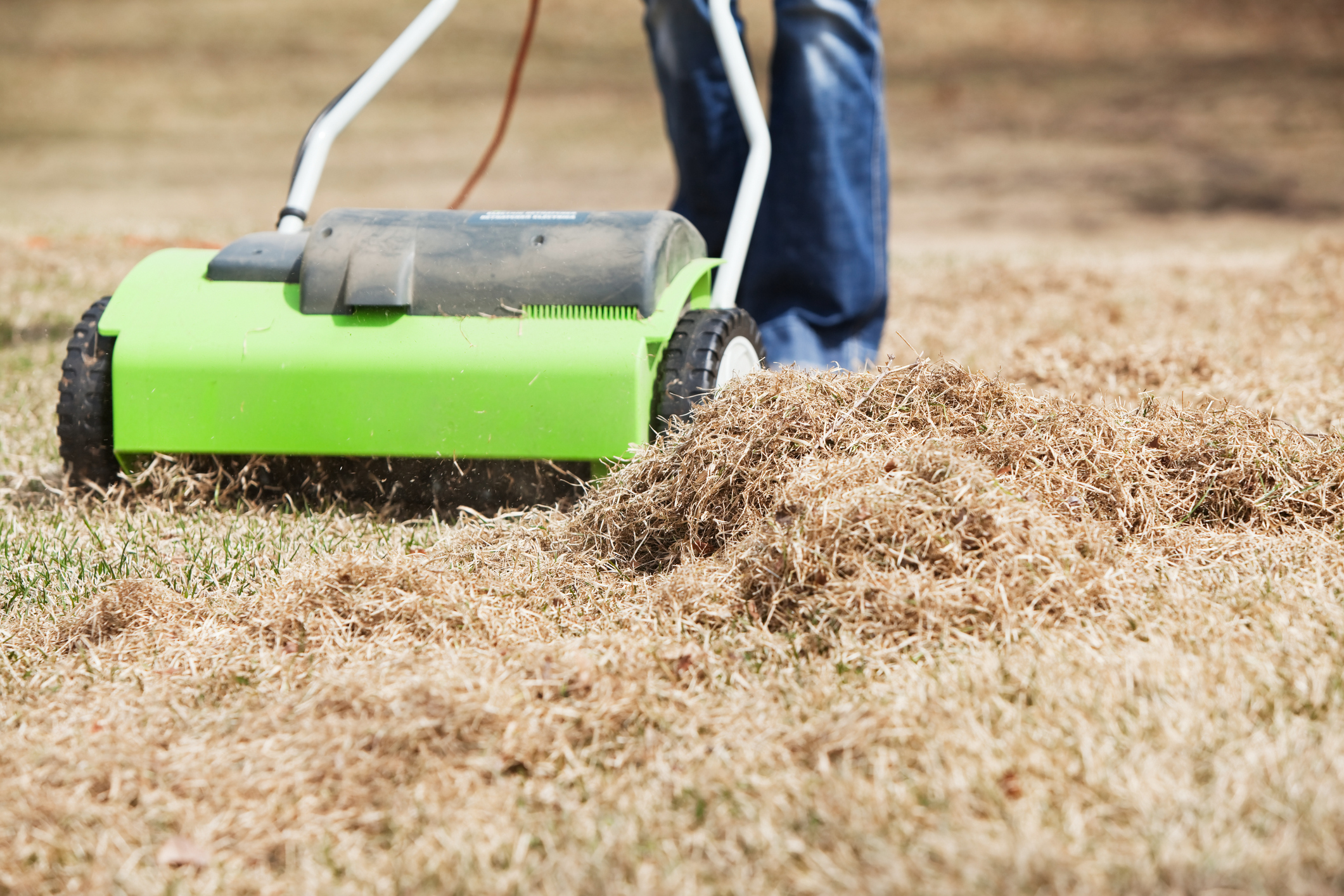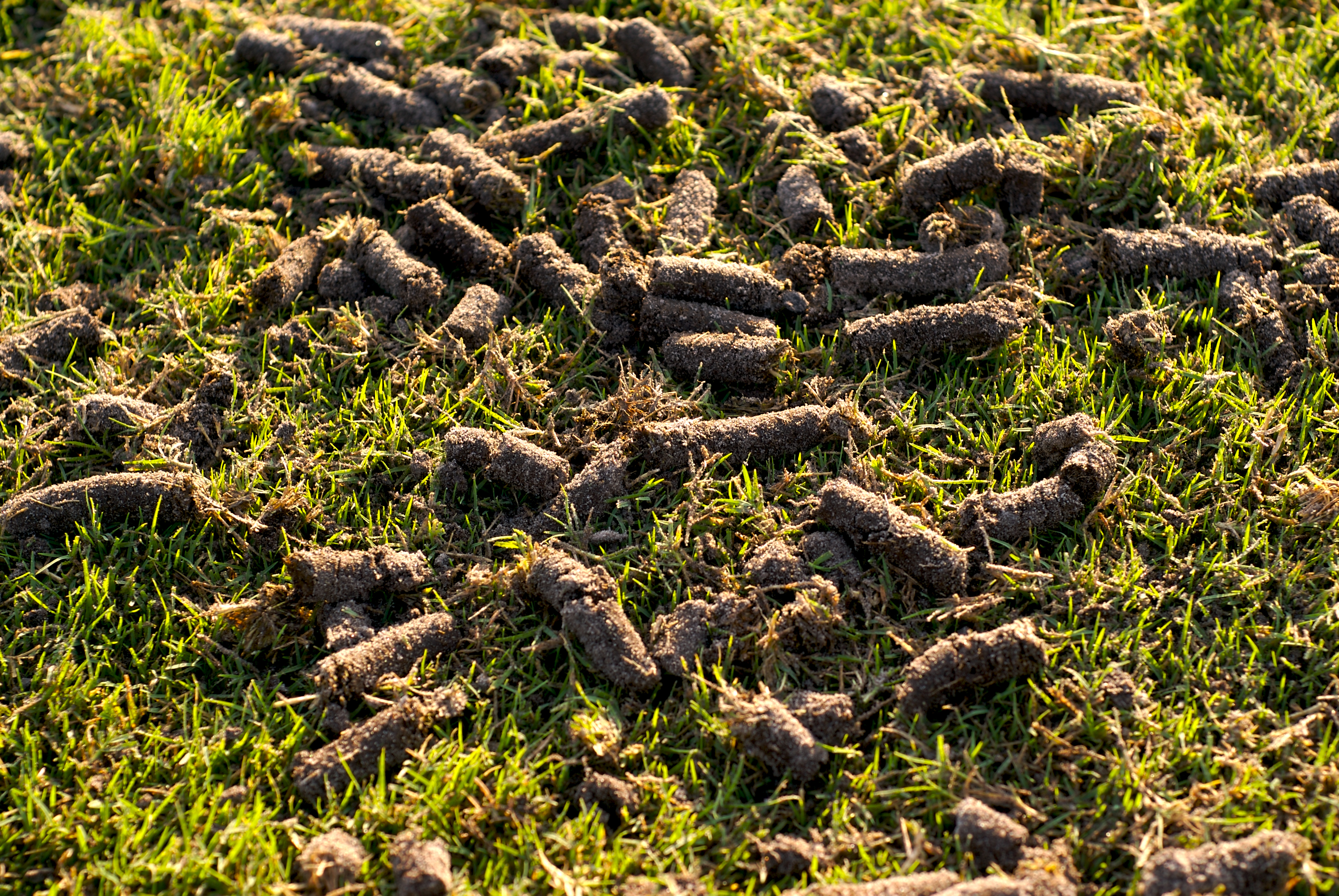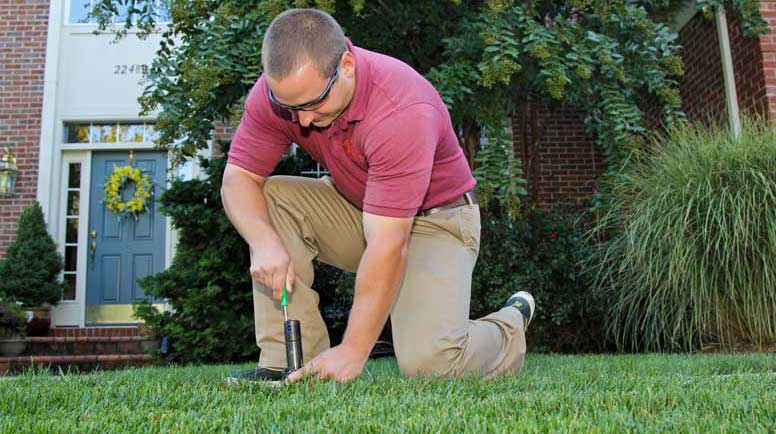8 CREATIVE WAYS WITH A GABION WALL
What's old is new again
For trusted expertise and superior results,
find a landscape professional near you.

Lawn care professionals are used to getting peppered with questions from customers, friends and families who want healthy, beautiful lawns. Like specialists in other fields, there is probably no profession-relevant question they haven’t heard from information seekers. How much water does my lawn need? When is the best time to mow? How can I get a lush lawn? Here are some of the pros favorite questions - and their answers. Have other questions? Talk with a lawn care professional in your area to take the guesswork out of proper lawn maintenance.
How can I get different patterns or striped looks with my lawn?
 Lawn patterns are created by a lawn mower’s deck pushing grass blades over as it passes. Light colored stripes are created by the mower moving away from you and dark colored stripes are created by the mower moving towards you. This effect can be enhanced by rollers attached to the rear edge of the mower. Some grass species, like perennial ryegrass, “stripe” better than others.
Lawn patterns are created by a lawn mower’s deck pushing grass blades over as it passes. Light colored stripes are created by the mower moving away from you and dark colored stripes are created by the mower moving towards you. This effect can be enhanced by rollers attached to the rear edge of the mower. Some grass species, like perennial ryegrass, “stripe” better than others.
How can you level a bumpy lawn?
 Lawns are generally “bumpy” for one of two reasons. First, poor grading or washouts at the time of installation or because of the presence of too many kinds of grass. If the former is the culprit at hand, the problem can be corrected by topdressing the affected areas and over time, the leveling will take hold. If the latter is causing problems, the lawn needs to be overseeded with “spread grasses” such as Kentucky Bluegrass.
Lawns are generally “bumpy” for one of two reasons. First, poor grading or washouts at the time of installation or because of the presence of too many kinds of grass. If the former is the culprit at hand, the problem can be corrected by topdressing the affected areas and over time, the leveling will take hold. If the latter is causing problems, the lawn needs to be overseeded with “spread grasses” such as Kentucky Bluegrass.
How can I get grass to grow in the shady area of my yard?
 Your efforts may be futile. You cannot force grass to grow where it’s not meant to thrive. Grasses are full sun plants with limited abilities to adapt to the shade. If you are trying to add green to a shady spot, set yourself up for success with ground covers that will thrive in sun-starved areas instead of futile attempts and getting grass to grow. Consider ajuga, pachasandra, hostas, lamium, or deadnettles for success in the shade.
Your efforts may be futile. You cannot force grass to grow where it’s not meant to thrive. Grasses are full sun plants with limited abilities to adapt to the shade. If you are trying to add green to a shady spot, set yourself up for success with ground covers that will thrive in sun-starved areas instead of futile attempts and getting grass to grow. Consider ajuga, pachasandra, hostas, lamium, or deadnettles for success in the shade.
Does my lawn need to be dethatched in the spring?
 Not necessarily. Thatch is a tightly interwoven mix of living and dead plant tissue that resides between the surface of the soil and the green grass leaves. A certain amount of thatch is beneficial – it’s what makes natural turf so good for sports – around one-half inch is best. Thatch will eventually decompose on its own but if the rate it accumulates is greater than the rate it breaks down you may need to remove some. A dethatcher is a machine that will slice into the thatch bringing some of it to the surface where it can be removed. The slices made by the machine allow air and water to more easily infiltrate into the soil, speeding thatch decomposition. Dethatching in the spring is an option, but remember that there are weed seeds in your soil that are waiting for the right opportunity to germinate. Dethatching can bring weed seeds into the open and inadvertently cause a higher than anticipated amount of weeds. A lawn care professional can take away the guess work of dethatching and ensure your yard has what it needs for proper health.
Not necessarily. Thatch is a tightly interwoven mix of living and dead plant tissue that resides between the surface of the soil and the green grass leaves. A certain amount of thatch is beneficial – it’s what makes natural turf so good for sports – around one-half inch is best. Thatch will eventually decompose on its own but if the rate it accumulates is greater than the rate it breaks down you may need to remove some. A dethatcher is a machine that will slice into the thatch bringing some of it to the surface where it can be removed. The slices made by the machine allow air and water to more easily infiltrate into the soil, speeding thatch decomposition. Dethatching in the spring is an option, but remember that there are weed seeds in your soil that are waiting for the right opportunity to germinate. Dethatching can bring weed seeds into the open and inadvertently cause a higher than anticipated amount of weeds. A lawn care professional can take away the guess work of dethatching and ensure your yard has what it needs for proper health.
Should my lawn be seeded in the spring?
 As a rule, spring seedings should be avoided if possible. Sometimes you must seed, for instance, you may need to repair damage caused by a snow plow or deicing salt first thing in the spring. The problem with spring seeding is that there is not enough time for new seedlings to mature sufficiently to tolerate the high heat and low soil moisture that prevail in the summer months. Spring seedings are also very prone to heavy weed infestations, especially crabgrass. Each lawn is different, but a more successful and economical alternative to spring seeding is to spend most of the season controlling weeds and insects, then planning on sowing seed somewhere between Mid-August and Mid-September. Fall seedings have the advantage of ever-improving weather conditions and much reduced competition from weeds. This is another part of lawn care that is usually best left to the pros.
As a rule, spring seedings should be avoided if possible. Sometimes you must seed, for instance, you may need to repair damage caused by a snow plow or deicing salt first thing in the spring. The problem with spring seeding is that there is not enough time for new seedlings to mature sufficiently to tolerate the high heat and low soil moisture that prevail in the summer months. Spring seedings are also very prone to heavy weed infestations, especially crabgrass. Each lawn is different, but a more successful and economical alternative to spring seeding is to spend most of the season controlling weeds and insects, then planning on sowing seed somewhere between Mid-August and Mid-September. Fall seedings have the advantage of ever-improving weather conditions and much reduced competition from weeds. This is another part of lawn care that is usually best left to the pros.
Someone told me my lawn needs aeration. What is that?
 Aeration involves the use of a machine that will insert a round tine into the soil and, most often, remove a core comprised of thatch and soil. The benefits of aeration are many including improved exchange of gasses between the atmosphere and the soil, reduced soil compaction, increased infiltration of water, increased root activity and much, much more. Most often completed in the cool months of autumn, aeration also provides for a nice little micro climate where new grass seedlings can develop, so it is often performed in conjunction with overseeding. Aeration and overseeding together are the two things, more than anything else, that separate average lawns from spectacular ones.
Aeration involves the use of a machine that will insert a round tine into the soil and, most often, remove a core comprised of thatch and soil. The benefits of aeration are many including improved exchange of gasses between the atmosphere and the soil, reduced soil compaction, increased infiltration of water, increased root activity and much, much more. Most often completed in the cool months of autumn, aeration also provides for a nice little micro climate where new grass seedlings can develop, so it is often performed in conjunction with overseeding. Aeration and overseeding together are the two things, more than anything else, that separate average lawns from spectacular ones.
What is a soil test? Do I have to study for it?
 A soil test tells your lawn care professional certain things about the health of the soil, from the availability of nutrients, to the relative acidity of the soil, to the soil’s texture. More and more states are requiring the use of soil tests before the application of nutrients and it’s a good idea, too. Applying fertilizers and lime based upon the results of a soil test results in the proper levels of nutrients being available for healthy plant growth and much less waste. A soil test is usually good for three years. A lawn care professional is specially trained to draw samples from your lawn and has a working relationship with the agricultural laboratory that performs the test. The results and recommendations are shared with you so that you can plan ahead to have whatever nutrients are necessary applied.
A soil test tells your lawn care professional certain things about the health of the soil, from the availability of nutrients, to the relative acidity of the soil, to the soil’s texture. More and more states are requiring the use of soil tests before the application of nutrients and it’s a good idea, too. Applying fertilizers and lime based upon the results of a soil test results in the proper levels of nutrients being available for healthy plant growth and much less waste. A soil test is usually good for three years. A lawn care professional is specially trained to draw samples from your lawn and has a working relationship with the agricultural laboratory that performs the test. The results and recommendations are shared with you so that you can plan ahead to have whatever nutrients are necessary applied.
There's a lot of know-how involved with creating beautiful lawns for your family to enjoy. To bring out the best in your lawn, contact a lawn care professional in your area.
We recently updated our Privacy Policy. By continuing to use this website, you acknowledge that our revised Privacy Policy applies.